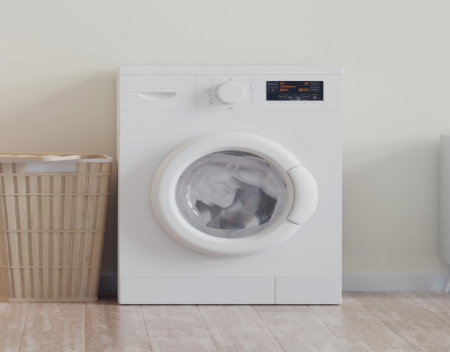Tipos de aparatos
- Aire acondicionado
- Automobile
- Chainsaw
- Circular Saw
- Lavaplatos
- Drills
- Secadora
- Drywall Screw Gun
- Horno
- Gas Fireplace
- Gas Grill
- Gas Patio Heater
- Grinder
- Heat Pump
- Impact Driver
- Impact Wrench
- Microonda
- Nailer
- Orbital Sander
- Calentadores de piscina
- Powerwall
- Distancia
- Refrigerador
- Television
- Lavadora
- Calentador de agua
Marcas de electrodomésticos
- A.O. Smith
- AccuCold
- Admiral Craft
- AGA
- Airrex
- Amana
- Ambiance
- American Range
- American Standard
- American Water Heaters
- Aquacal
- Armstrong
- Asko
- Avanti
- Avenlur
- Azure
- Beko
- Bellfires
- Bertazzoni
- Blackstone
- Blaze
- Blomberg
- BlueStar
- Bosch
- Bradford White
- Bromic
- Bryant
- Cafe
- Calcana
- Capital
- Carrier
- Char-Broil
- Char-Griller
- Chrysler
- Coates
- Coleman
- Comfortmaker
- Commercial Chef
- Continental
- Cosmo
- Cove
- Crown Verity
- Dacor
- Daikin
- Danby
- Danfoss
- DaVinci
- DCS
- Deco
- DeWALT
- Ducane
- Dyna-Glo
- Dyson
- EcoSmart
- Electrolux
- Element4
- Empava
- Equator
- Eurodib
- European Home
- Everdure
- Farberware
- Fhiaba
- FibroPool
- Fire Sense
- Fisher
- FiveStar
- Flare
- Flash Furniture
- Focus
- Ford
- Forno
- Forte
- Frigidaire
- Fulgor Milano
- Gaggenau
- GE
- General Motors
- GlowBrand
- Goodman
- Grundig
- GSW
- Haier
- Hayward
- Heatstar
- Heil
- Hestan
- Hisense
- Hitachi
- Hotpoint
- iio
- Ilve
- Impecca
- Ingignia
- Insignia
- JennAir
- John Wood
- Keeprite
- Kenmore
- Kenyon
- KitchenAid
- Kucht
- La Cornue
- Lennox
- LG
- Liebherr
- Lifetime
- Lion
- Luxaire
- Lynx
- Magic Chef
- Marvel
- Maytag
- McQuay
- MicroFridge
- Midea
- Miele
- Migali
- Monogram
- Montigo
- Mr Heater
- Napoleon
- Navien
- Nexgrill
- Noritz
- Panasonic
- Patio Comforts
- Payne
- Pentair
- Perlick
- PITT
- Premier
- Raypak
- Real Fyre
- Regency
- Reliance
- Rheem
- Rinnai
- Roma
- Ruud
- Saber
- Samsung
- Schwank
- Sharp
- Smeg
- Solas
- Sony
- Spartherm
- Speed Queen
- StaRite
- State Water Heaters
- Stiebel Eltron
- SubZero
- Summerset
- Summit
- SunGlo
- SunPak
- Sunpentown
- SunStar
- Superiore
- Takagi
- TCL
- TEC
- Tempstar
- Tesla
- Thermador
- Thor Kitchen
- Toshiba
- Town and Country
- Toyota
- Traeger
- Trane
- Twin Eagles
- U-Line
- Unique
- Vaillant Group
- Valor
- Verona
- Victory
- Viessmann
- Viking
- Vizio
- Weber
- Westinghouse
- Whirlpool
- Whynter
- York
- ZLINE
Categorías de artículos
- Aire Acondicionado
- Cuidado de los electrodomesticos
- Appliance News
- Dishwasher News
- Maquinas de secado
- Hornos
- Gas Fireplaces
- Microondas
- Calentadores de piscina
- Frigorificos
- Estufas - Cocinas
- Trucos y consejos
- Lavadoras
- Water Heaters
Más artículos
Bosch Washer wont spin

Bosch Washer won't spin.
Lid Switch Assembly.
The lid switch assembly prevents the washer from spinning when the lid is open. If the lid switch assembly fails, the washer will not spin. To determine if the lid switch assembly is defective, use a multimeter to test the lid switch for continuity. If the lid switch does not have continuity, replace it.
Motor Coupling.
The motor coupling connects the motor to the washing machine transmission. If the washer is overloaded, the motor coupling will fail in order to protect both the motor and transmission. The motor coupling can also fail due to normal wear. Inspect the motor coupling to determine if it is broken. If the motor coupling is broken, replace it.
Door Latch.
The door latch secures the washer door shut during operation. Once the washer door is shut, the washer can begin operating. If the washer door is not latched shut, the door switch will prevent the washer from operating. If the door latch is defective, the washer will not spin or start. The door latch can fail either mechanically or electrically. Inspect the door latch for damage. If the door latch is damaged or does not close properly, replace it. To determine if the door latch has failed electrically, use a multimeter to test any switches on the door latch for continuity. If one of the switches does not have continuity when activated, replace the switch.
Motor Control Board.
The motor control board provides power to the motor. If the motor control board is defective, the washer may not function properly or may not work at all. First, check the control board for burned out components. To determine if the motor control board is defective, ensure that the control board is providing power to the motor. If the control board has power but is not providing power to the motor, replace it.
Clutch.
The clutch assembly makes the connection between the transmission and the inner tub. It helps the tub to gradually get up to the proper spin speed. If the clutch is worn out, it may prevent the tub from spinning. The clutch is not repairable—if the clutch is worn out, replace it.
Clutch Band Kit.
The clutch makes the connection between the transmission and the inner tub. It helps the tub to gradually get up to the proper spin speed. If the clutch is worn out, it may prevent the tub from spinning. If the clutch band kit is worn out, replace it.
Drive Pulley.
The drive pulley connects to the washer drum and works with the drive belt and motor to rotate the drum. If the drive pulley is worn out, the drive belt might slip off, preventing the washer from spinning. Remove the drive pulley and inspect it. If the drive pulley is defective, replace it.
Rotor Assembly.
The rotor interacts with the stator to create a strong electromagnetic field, which rotates the tub in either direction. If the magnets on the rotor are damaged, or any part of the rotor is defective, the washer may not spin or agitate. To determine if the rotor is defective, inspect the rotor for damage. If the rotor is damaged, replace it.
Stator Assembly.
The stator interacts with the rotor to create a strong electromagnetic field that rotates the tub in either direction. If the windings on the stator are damaged, the washer will not spin or agitate. Check the stator for damaged windings or other defects.
Bearing.
The bearing is mounted in the middle of the outer tub. The bearing helps to keep the inner tub spinning smoothly. If the tub bearing is defective, and the bearing is sold separately, replace it. If the bearing is not available separately, replace the outer tub and bearing as an assembly. Replacing the outer tub and bearing is a difficult and costly repair—if the bearing is defective, consider replacing the entire washing machine.

Bosch Washer won't spin.
Lid Switch Assembly.
The lid switch assembly prevents the washer from spinning when the lid is open. If the lid switch assembly fails, the washer will not spin. To determine if the lid switch assembly is defective, use a multimeter to test the lid switch for continuity. If the lid switch does not have continuity, replace it.
Motor Coupling.
The motor coupling connects the motor to the washing machine transmission. If the washer is overloaded, the motor coupling will fail in order to protect both the motor and transmission. The motor coupling can also fail due to normal wear. Inspect the motor coupling to determine if it is broken. If the motor coupling is broken, replace it.
Door Latch.
The door latch secures the washer door shut during operation. Once the washer door is shut, the washer can begin operating. If the washer door is not latched shut, the door switch will prevent the washer from operating. If the door latch is defective, the washer will not spin or start. The door latch can fail either mechanically or electrically. Inspect the door latch for damage. If the door latch is damaged or does not close properly, replace it. To determine if the door latch has failed electrically, use a multimeter to test any switches on the door latch for continuity. If one of the switches does not have continuity when activated, replace the switch.
Motor Control Board.
The motor control board provides power to the motor. If the motor control board is defective, the washer may not function properly or may not work at all. First, check the control board for burned out components. To determine if the motor control board is defective, ensure that the control board is providing power to the motor. If the control board has power but is not providing power to the motor, replace it.
Clutch.
The clutch assembly makes the connection between the transmission and the inner tub. It helps the tub to gradually get up to the proper spin speed. If the clutch is worn out, it may prevent the tub from spinning. The clutch is not repairable—if the clutch is worn out, replace it.
Clutch Band Kit.
The clutch makes the connection between the transmission and the inner tub. It helps the tub to gradually get up to the proper spin speed. If the clutch is worn out, it may prevent the tub from spinning. If the clutch band kit is worn out, replace it.
Drive Pulley.
The drive pulley connects to the washer drum and works with the drive belt and motor to rotate the drum. If the drive pulley is worn out, the drive belt might slip off, preventing the washer from spinning. Remove the drive pulley and inspect it. If the drive pulley is defective, replace it.
Rotor Assembly.
The rotor interacts with the stator to create a strong electromagnetic field, which rotates the tub in either direction. If the magnets on the rotor are damaged, or any part of the rotor is defective, the washer may not spin or agitate. To determine if the rotor is defective, inspect the rotor for damage. If the rotor is damaged, replace it.
Stator Assembly.
The stator interacts with the rotor to create a strong electromagnetic field that rotates the tub in either direction. If the windings on the stator are damaged, the washer will not spin or agitate. Check the stator for damaged windings or other defects.
Bearing.
The bearing is mounted in the middle of the outer tub. The bearing helps to keep the inner tub spinning smoothly. If the tub bearing is defective, and the bearing is sold separately, replace it. If the bearing is not available separately, replace the outer tub and bearing as an assembly. Replacing the outer tub and bearing is a difficult and costly repair—if the bearing is defective, consider replacing the entire washing machine.




